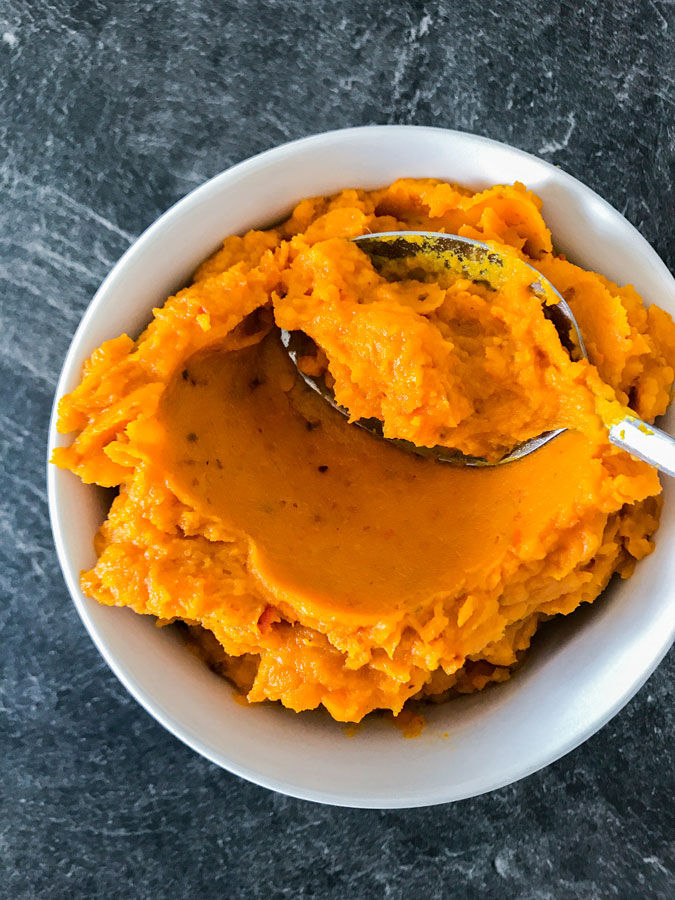Homemade pumpkin puree is an amazing autumn ingredient that can be used in many different ways and is actually very easy to prepare at home.
It can be made by cooking the pumpkin in hot water, but with this technique you take the risk of the puree being watery especially if the pumpkin is overcooked. Therefore, I prefer to bake pumpkin in the oven, which also contributes greatly to better taste, especially if you manage to achieve pumpkin caramelization.
Process instructions:
1. Cut the pumpkin in half and remove the seeds with a spoon. It can be peeled and cut into larger pieces.
2. Place baking paper in the baking dish and distribute pumpkin pieces on it.
3. Drizzle with oil and mix.
4. Season only if you know the exact purpose of using your pumpkin puree.
5. Bake in a preheated oven at 180 degrees Celsius for 40 minutes to give the pumpkin a nice brownish color and that it becomes soft.
6. Allow to cool slightly. You can also remove the skin now if necessary.
7. Mash the lukewarm pumpkin with a fork for a rough puree texture or blend until smooth in a kitchen blender (or with a stick mixer). Stir several times and scrape off the edges to get rid of any larger pieces.
8. Prepared pumpkin puree can be used immediately or stored in the refrigerator, in a closed container, for up to 4 days. It can even be frozen.
As you can see the process is really easy, but for a successfully prepared pumpkin puree at home, you need to keep in mind several things:
Which pumpkin to use?
To prepare pumpkin puree, you can use a yellow-red pumpkin that you desire. I myself most often work with hokkaido or butternut squash. However, the procedure and the end result are slightly different depending on the type you choose.
Do you have to peel a pumpkin?
Most pumpkins are quite difficult to peel, so it is important to consider whether and when this is necessary. If you peel before cooking, you have to be really careful not to cut yourself. You can help yourself by holding the pumpkin with a kitchen towel so that it does not slip.
I actually don’t peel the Hokkaido pumpkin (I only scrape off any irregularities on the skin), because the skin softens nicely with baking and gets completely lost when blending, especially if you prepare a soup. Little pieces actually don’t bother me either, because you can’t even feel them. However, baked butternut squash makes a chewy peel that needs to be removed. I prefer to do this when the squash is already baked, simply by removing it with my hand or scooping out the meat with a spoon.
Do you stick to the written baking time?
It is always necessary to monitor what is happening in the oven and think about what do you want to get at the end. Baking time depends on the size of the pumpkin pieces, if you just cut it in half, the baking time will be longer, for example. Or shorter if baked at 200 degrees Celsius. Care must be taken not to burn the pieces. You need to aim for the final result, which is a nicely baked, lightly colored, soft pumpkin.
How do you season a pumpkin?
If you want your pumpkin puree to be versatile, then don’t season the pumpkin before baking. However, if you know what you are going to use the puree for, you can add salt, sugar or other spices as desired.
With pumpkin puree you can prepare everything from soups, gnocchi, risotto, pasta sauce, pie, to bread, muffins, roulade and more.
You can take a look at some of my recipes that contain pumpkin puree:











Leave A Comment